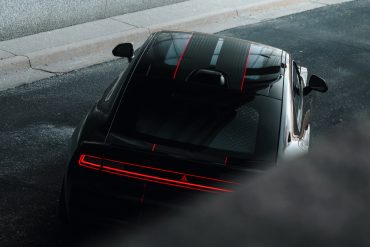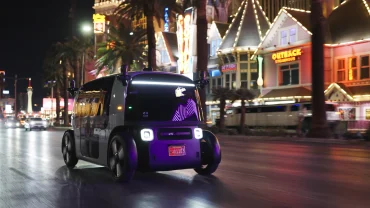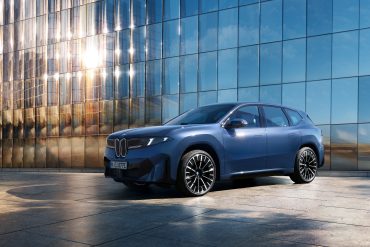
- Mobility & Transportation
Stellantis Names Antonio Filosa CEO Amid 17% Revenue Decline
6 minute read

New Stellantis CEO Filosa tackles declining sales and market share with decentralized management strategy across global operations
Three Key Facts
- Revenue plunged 17.2% in 2024 as Stellantis posted $165 billion in revenue with net profit dropping 70% to $5.8 billion amid declining shipments and market share losses.
- Antonio Filosa assumes CEO role June 23, 2025 following Carlos Tavares’ abrupt resignation in December after conflicts with the board over cost-cutting strategies.
- Market share declined 5 percentage points in North America and Europe as the company’s failed upmarket strategy resulted in 630,000 lost sales since 2018.
Introduction
Antonio Filosa steps into the CEO role at Stellantis confronting a cascade of operational and financial challenges that threaten the automaker’s market position. The 51-year-old executive, who rose from a night shift paint shop supervisor in Spain, officially takes charge as the company grapples with strained dealer relationships, declining sales, and mounting pressure from electric vehicle transitions.
Filosa’s appointment represents a strategic pivot from his predecessor’s centralized approach. According to CNBC, the new CEO embraces the philosophy of late mentor Sergio Marchionne: “Mediocrity is not worth the trip.” This leadership transition comes at a critical juncture as Stellantis seeks to balance immediate operational fixes with long-term electrification goals.
Key Developments
Carlos Tavares resigned abruptly last December following mounting board tensions over his aggressive cost-cutting measures. Industry analysts cite his strategy of moving brands upmarket while accelerating electrification as contributing factors to the company’s declining performance. The approach resulted in higher prices for core brands including Jeep, Ram, Chrysler, and Dodge.
Filosa’s restructuring strategy centers on decentralized decision-making to empower regional leadership teams. Key appointments include Emanuele Cappellano leading South America operations, Scott Thiele overseeing supply chain management, and Sébastien Jacquet driving quality improvements. This organizational shift aims to align product strategies with local market demands.
The new CEO maintains dual responsibilities as head of North America while leading global operations. This structure ensures direct oversight in Stellantis’ most profitable market, though analysts at Jefferies express concerns about the complexity of managing both roles simultaneously.
Market Impact
Stellantis shares have declined 10% since Filosa’s appointment announcement and remain down 25% year-to-date as of June 2025. The market reaction reflects investor disappointment with selecting an internal candidate rather than pursuing external leadership.
First quarter 2025 results highlight ongoing operational challenges. Revenue fell 14% year-over-year to €35.8 billion, driven by 9% lower shipment volumes and continued price normalization pressures. North American production particularly suffered from extended holiday downtime and product transition delays.
The company’s dividend maintains stability at €0.68 per share, yielding approximately 4% at current prices. However, Stellantis suspended 2025 financial guidance due to tariff uncertainties and supply chain disruptions, adding volatility to investor expectations.
Strategic Insights
Stellantis faces a fundamental strategic recalibration between traditional combustion engines and electric vehicle investments. The company’s previous upmarket strategy backfired significantly, with discontinued models like the Dodge Grand Caravan and Jeep Cherokee contributing to 630,000 lost sales since 2018. New launches including the Dodge Hornet and Jeep Wagoneer added only 76,000 sales in comparison.
Electric vehicle momentum shows promise with models like the all-electric Dodge Charger Daytona capturing 65% of Charger sales. The company targets second-place EV market position in Europe through launches including the Jeep Avenger and upcoming Fiat Grande Panda. However, consumer adoption rates for battery electric vehicles remain uncertain across key markets.
Geographic diversification presents opportunities beyond struggling North American operations. South America shows recovery with 1.5 percentage point market share gains, while Middle East and Africa localization projects advance. Technology partnerships, including collaboration with Mistral AI for in-car assistants, signal expansion into adjacent revenue streams.
Expert Opinions and Data
Ram CEO Tim Kuniskis endorses Filosa’s leadership capabilities, stating “Antonio’s awesome,” while highlighting his relationship-building skills and strategic vision. Industry observers describe the appointment as logical but safe, reflecting board preferences for internal continuity over external disruption.
Filosa acknowledges the operational complexity ahead, describing his agenda as a “multitask challenge.” In January, he emphasized market share recovery as essential, stating “We need to do that. It’s not a belief; it’s a need.” His approach prioritizes organic sales growth through new product launches including the redesigned Jeep Cherokee and additional Ram 1500 models.
Technology Chief Ned Curic continues leading innovation initiatives, including the STLA AutoDrive 1.0 autonomous driving system launch. CFO Doug Ostermann remains focused on mergers and acquisitions while managing financial restructuring requirements. Chair John Elkann guides the broader management overhaul as part of distancing from the Tavares era.
Conclusion
Filosa’s leadership transition reflects Stellantis’ urgent need to stabilize operations while advancing electrification goals. The company’s current challenges encompass declining traditional vehicle sales, uncertain EV adoption rates, and competitive pressure from Chinese manufacturers. Supply chain bottlenecks, particularly in semiconductors, continue constraining production capacity.
The automotive industry’s transformation requires Stellantis to execute successfully across multiple dimensions simultaneously. Filosa’s decentralized approach may accelerate product development cycles, but market share recovery depends on pricing strategies and product-market alignment. The company’s ability to avoid the mediocrity Filosa pledges to combat will determine whether this leadership change delivers sustainable value creation.








